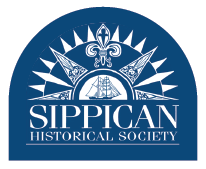This July 4 will be a day we could never have anticipated a year ago. While we may still gather with friends and family to celebrate our country’s independence, many of us will be wearing masks, many will refrain from hugging, singing, playing touch football, or even standing closer than 6 feet apart, and our holiday travel will consist of walking from our kitchens to our backyards. Happily, however, we are safer outside than in, so we can still enjoy a traditional July 4th barbeque, wave a flag in honor of the day, and be grateful for our blessings and the beauty of our southcoast land- and seascape.
The isolation we endured this past spring was unprecedented in our lifetimes, and we are even now counseled by health and government professionals to stay home as much as possible. Yet a remarkable thing happened with this enforced isolation. Creativity blossomed! The internet, now a primary source of communication and connection, became a platform for choruses to perform “together” virtually, for dancers to create and share stunning kitchen ballets, for people everywhere to discover the humble joy of baking bread, for beginning knitters to show off the work of their hands, and for amateur gardeners to start digging in the dirt and then proudly display their crops of flowers, fruits, and veggies.
But our isolation, though new to us, is not a unique experience. Imagine the isolation of those 19th century whalers who left their home ports for months, even years at sea. Their isolation was felt even more keenly than ours; they had no internet, no television, no radio, and quite literally nowhere to go. Many whalers turned their boredom into creative activity, just as we have done. Using the material they had on hand – the ivory from the teeth of whales they caught – they created miniature works of art to pass the long days at sea. The whale’s tooth shown above, part of the William Claflin Jr. Collection here at the SHS, is a wonderful example of this art form called “scrimshaw,” and manifests the remarkable skill of these artists. With images of whaling ships, exotic flora, and loved ones back home, scrimshaw bears witness to the incredible creativity of whalers whose isolation was the catalyst for their art.

 The tooth shown to the left is approximately 6 inches long, and depicts the figure of Justice with the American flag behind her and an eagle above. The corresponding piece to the right depicts Liberty, also with the American flag and the eagle. On the reverse of each piece is the figure of a man and woman – quite possibly the whaler and his beloved, or perhaps his mother and father. They are small but amazing works of art – and demonstrate how time and isolation can be useful tools. Has the COVID-19 isolation ignited some creativity in you? Let us know about the ventures you tried during this challenging time! We are assembling a collection called Our COVID-19 Experience here in the SHS archives – and we would love to add your story to the historical record!Happy Independence Day – and Be Creative!
The tooth shown to the left is approximately 6 inches long, and depicts the figure of Justice with the American flag behind her and an eagle above. The corresponding piece to the right depicts Liberty, also with the American flag and the eagle. On the reverse of each piece is the figure of a man and woman – quite possibly the whaler and his beloved, or perhaps his mother and father. They are small but amazing works of art – and demonstrate how time and isolation can be useful tools. Has the COVID-19 isolation ignited some creativity in you? Let us know about the ventures you tried during this challenging time! We are assembling a collection called Our COVID-19 Experience here in the SHS archives – and we would love to add your story to the historical record!Happy Independence Day – and Be Creative!
N.B. You will be able to see these incredible artifacts in our museum when we open on Saturday, July 11. We look forward to welcoming you back!
